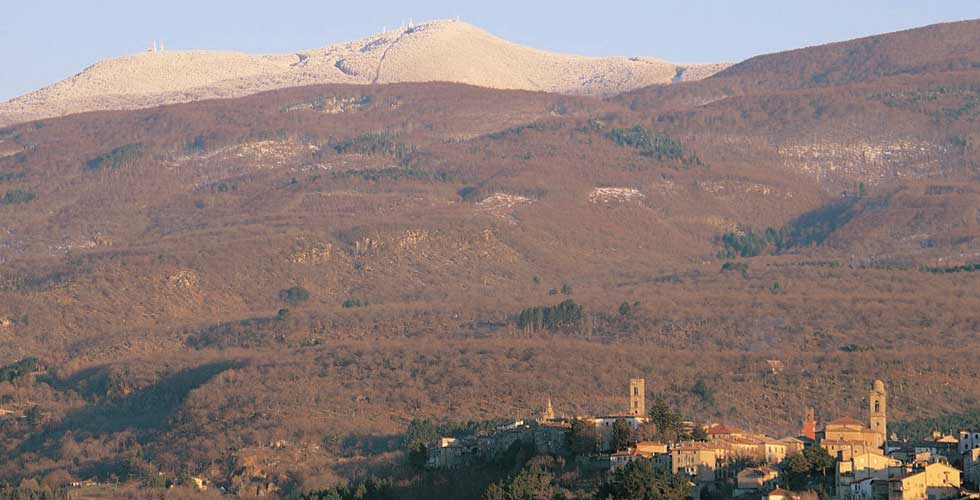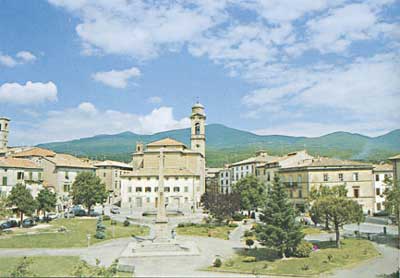
| Weather forecast | Web cam | Weather station | Contact us | Photo Gallery | Links | Search |
| Getting there | Nature | Culture | Epicurean living | Activities | Routes | Our hotel |
Castel del Piano

(The Castel del Piano square)
During the XIII century it fell under the rule of the Aldobrandeschi counts of Santa Fiora. During the XIV century it became part of the territory of the SienaRepublic: during this period the “Statutes” were conceded (1393) the Fair showcasing merchandise and livestock, September 9th 1402, and the first Palio historical horse races were run.
The historical centre was closed by boundary walls and it was accessed through two gates: Pianese (today Porta dell’orologio) and Castiglionese (today Porta Amiata). The medieval centre maintains an harmonic series of parallel alleys interrupted by slopes, small squares (the evocative Piazzetta degli Ortaggi) and stairways. In 1600 Porta Spennazia was built to join the current Corso nasini, through a long stairway, to the Piana, main road of the ancient village, where various artisan workshops were set up starting in the XVI century. The modern urban expansion, determined the development of a structure based on a system of three avenues, characterized by an open plain and interrupted by gardens and squares which run along side of the medieval centre. The main squares of the town are: Piazza Tonda or Piazza delle Storte, where the Palio delle Contrade is held in 8th September during celebrations to honour the Madonna delle Grazie. A peperino obelisk dominates in the centre of the square and dates back 1883, the first in Italy to honour Garibaldi. Piazza Madonna is delimited by the seventeenth century Palazzo Cerboni, by the Chiesa dell’Opera and by the Chiesa di San Giuseppe, the largest religious building of the Amiata region.
Inside, there are the paintings by Nasini and Sorbelli. The other churches of Castel del Piano are San Leonardo and the “Chiesa Piccina” (=small church). The first erected after extending a Benedectine cell (1198).
It’s in Romanesque style and contains an organ of the Agati brothers from Pistoia and paintings by Nasini and Vanni. The renaissancebaptistery comes from the “Chiesa Piccina”.
To visit in Castel Del Piano:
- The historic centre
- The ancientwine cellars
- Palazzo Nerucci (the museum with the art of the cultural farmers)
- The medieval gate of Castel del Piano
- The Nasini Street
- The small Theater
- The " loggia della Mercanzia"
- The buildings of Monaci, Cantucci, Bruni, Alluigi, Cerboni
For the evening:
- Pub Kruger
- Disco Kronos